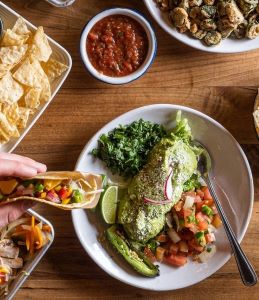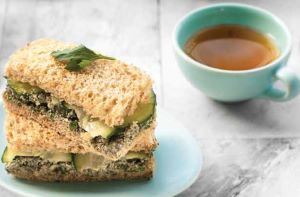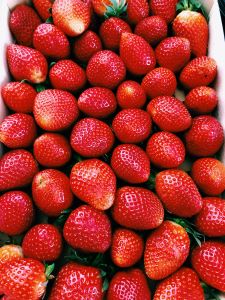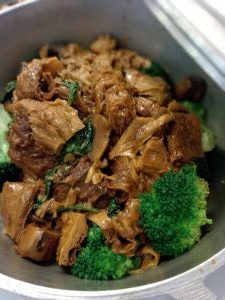Posted on
May 12, 2023 by
The VRG Blog Editor
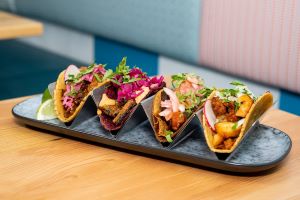
photo from Don Bucio Taqueria
The Vegetarian Resource Group maintains an online Guide to Vegan/Vegetarian Restaurants in the USA and Canada. Here are some recent vegan restaurant additions. The entire guide can be found here: http://www.vrg.org/restaurant/index.php
To support the updating of this online restaurant guide, please donate at: www.vrg.org/donate
Here are some new additions to VRG’s guide:
Dodah’s Kitchen, 152 Smallwood Village Center, St. Charles, MD 20602
‘Dodah,’ meaning ‘aunt’ in Hebrew, specializes in soul food. Some favorite menu items are the mac n’ cheese (made with handmade soy cheese), “crab” cakes, and collard greens. Dodah’s Kitchen is also known for its desserts, such as decadent chocolate cake and mouthwatering blueberry cheesecake, as well as waffles and pancakes. This is grandma’s (or your aunt’s) home cooking and hospitality at its finest.
Don Bucio Taqueria, 2764 N. Milwaukee Ave., Chicago, IL 60647
Come here for all-you-can-eat vegan tacos and 50% off margarita pitchers during their late night happy hours! They offer a choice of forest mushrooms, legume and root vegetables, textured vegetable protein, or jackfruit for all entrees. Stop by Friday-Sunday to try the “Posole Rojo,” a soup with guajillo broth, roasted oyster mushroom, hominy corn, and a side of chips.
Happy Zoe Vegan Bakery, 102 B Nassau Ave., Brooklyn, NY 11222
Check out Happy Zoe Vegan Bakery for your next fully vegan custom birthday cake or cheesecake! This bakery specializes in vegan and gluten-free cakes, cheesecakes, cookies, doughnuts, and buns. Their decadent, Instagram-worthy cakes include the vegan chocolate vanilla Black Forest cherry cake with vegan cinnamon roll on top, and their vegan gluten-free dark chocolate peanut butter cheesecake. Happy Zoe Vegan Bakery ships their desserts all across the United States, but be sure to check out their shipping policy for each cake, as they cannot ship fresh fruit.
Herby Vegan, 239 Muddy Branch Rd., Gaithersburg, MD 20878
Kitchen offering healthy, homemade foods made from fresh, organic foods, for pickup or delivery only. Much of their menu consists of innovative Salads, Brussel Sprouts, Cauliflower Steak, pressed juices, and other “health food” staples, but they also offer the likes of Burrito Breakfast Bowls, Empanadas, and pasta, with the precise menu varying seasonally.
Love It Vegan, 73 Main St., Torrington, CT 06790
Distinguished for being a woman-owned business, Love It Vegan’s menu offers choices galore—including many gluten-free options. Proteins like Just Egg, Beyond meats, and seitan are used, and from breakfast sandwiches to omelets (with the option to build-your-own), from the Clam Chowder and seasonal soups to the Chickpea Tuna Melt and the Po’ Boy sandwich, along with several choices of sides (including Home-fries and fried oyster mushrooms), one could eat here for many, many days and never have the same meal twice. And on top of all this, there are fresh juices and oat milk smoothies with catchy names, like Spam (Strawberry, Pomegranate, Avocado, and Mango). Breakfast is the most important meal of the day, and lunch is a close second, and Love It Vegan is there to serve up delicious dishes for both.
VeggiEat Xpress, 6507 SR-179, Sedona, AZ 86351
An Asian fusion restaurant with a pastiche of clean, freshly-made offerings including sushi, wok stir-fry, noodles, burger sandwiches, soups, salads, appetizers, and boba drinks. Veggieat’s plant-based meat options have been meticulously crafted with soy protein, pea protein, and wheat, and seem to appeal to vegans and omnivores alike. Some of their most talked-about dishes include the Crunchy Sesame Roll, Rainbow Roll, Lasagna Roll, Mushroom Udon Noodles, Walnut Shrimp Bowl, and Hibiscus Passion-fruit Mint Tea. Sweet, savory, and spicy options are available across the board. On a related note, many choices can be prepared without onion or garlic if so desired. Location is within walking distance of most local hotels.
